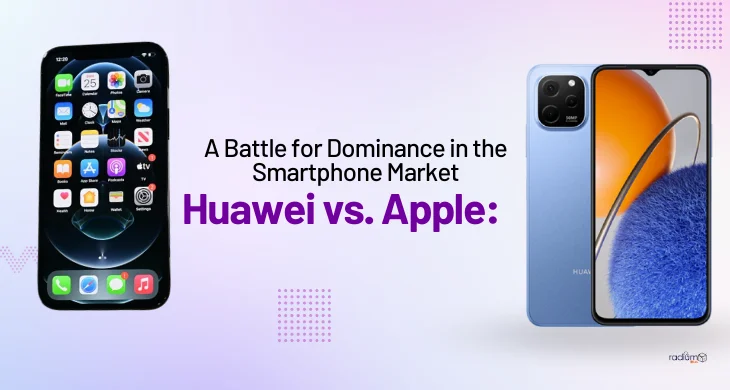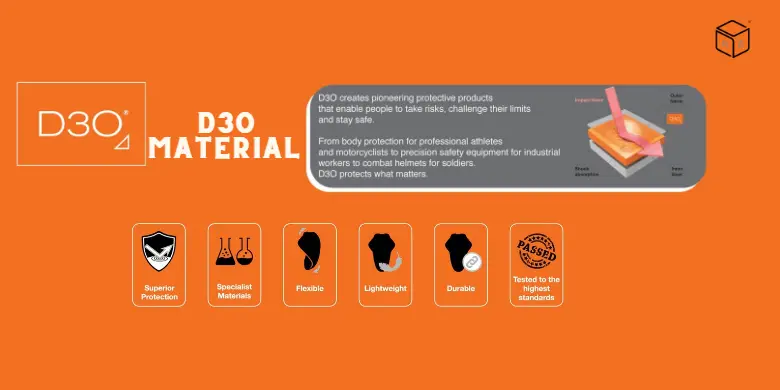The recent surprise launch of Huawei’s latest high-end smartphone has ignited interest in the global mobile phone market. Notably, China leads as the world’s largest mobile phone market, followed by India and the United States. Intriguingly, these three markets exhibit distinct trends and preferences. In China, a wide spectrum of mobile phones, be it flagship, mid-range, or entry-level, enjoys robust sales. This contrasts with the U.S., which leans toward the flagship market, and India, where mid-range and entry-level devices capture a significant share. It’s worth noting that prior to the 2019 ban on Huawei, the company was on the brink of claiming the title of the world’s largest mobile phone brand.
Huawei’s Rise in the Smartphone Market:
Huawei, a Chinese multinational technology company, has experienced a remarkable ascent in the global smartphone market over the past decade. Here’s an exploration of the key factors and strategies that fueled Huawei’s growth:
- Innovative Technology: Huawei invested heavily in research and development, leading to the creation of cutting-edge technology and features in their smartphones. They introduced innovations in camera technology, battery life, and processing power, which attracted tech-savvy consumers.
- Quality and Design: Huawei focused on crafting well-designed, premium smartphones that rivaled competitors like Apple and Samsung. Their commitment to quality materials and craftsmanship appealed to consumers looking for high-end devices.
- Global Expansion: Huawei expanded aggressively into international markets, establishing a strong presence in Europe, Asia, Africa, and beyond. This global footprint helped them reach a diverse customer base and gain market share.
- Affordable Options: Huawei offered a range of smartphones catering to various budget segments. Their affordable models provided excellent value for money, attracting cost-conscious consumers.
- Strong Partnerships: Collaborations with telecom operators worldwide, particularly in 5G technology, helped Huawei gain an edge in the emerging 5G market. This strategic partnership approach solidified their position as a leader in telecommunications.
- Focus on Emerging Markets: Huawei recognized the potential of emerging markets and tailored products to suit local needs and preferences. This approach allowed them to capture significant market share in regions like Asia and Africa.
- Brand Recognition: Over time, Huawei successfully built brand recognition and trust among consumers, positioning itself as a formidable competitor to established smartphone giants.
- Diversification: Huawei’s diversification into other consumer electronics, such as tablets, wearables, and laptops, complemented its smartphone business and created a holistic ecosystem for consumers.
A Look at Huawei’s Market Share Over the Years:
Huawei, the Chinese technology giant, has exhibited a dynamic trajectory in terms of its global smartphone market share over the years. Let’s examine its market share evolution:
2000s – Early Entry:
- Huawei entered the smartphone market in the early 2000s but had a limited presence, primarily in its home country, China.
- Market share during this period was relatively small, and Huawei was not yet a prominent global player.
2010s – Growth and Expansion:
- The 2010s marked a significant turning point for Huawei. The company began expanding its smartphone business globally.
- By the mid-2010s, Huawei started gaining traction in international markets, especially in Europe and Asia.
- Market share steadily increased, and Huawei became one of the world’s top smartphone manufacturers.
- By the end of the decade, Huawei’s market share reached its peak, making it the second-largest smartphone vendor globally, surpassing Apple.
2020 – Challenges and Setbacks:
- In 2020, Huawei faced unprecedented challenges, including sanctions imposed by the United States, which restricted its access to essential technologies, including Google services.
- These challenges had a significant impact on Huawei’s market share, particularly in Western markets.
- Despite these setbacks, Huawei remained a strong player in China and some other regions.
2021 and Beyond – Adaptation and Recovery:
- Huawei continued to adapt to the changing landscape, focusing on its home market and strengthening its presence in China.
- The company also explored new technologies, including HarmonyOS, as an alternative to Google’s Android OS.
- While facing headwinds in the international market, Huawei’s market share remained stable in China.
Market Share Face-Off:
The market share face-off between Apple and Huawei has been a prominent and closely watched competition in the global smartphone industry. Let’s examine how these two tech giants have fared in terms of market share and their respective strengths:
Apple:
- Consistent High-End Presence: Apple has maintained a strong presence in the premium smartphone segment, with its iPhone series. The brand is associated with quality, design, and innovation.
- Loyal Customer Base: Apple has a dedicated and loyal customer base that eagerly awaits new iPhone releases. This loyalty has contributed to its steady market share.
- Ecosystem Integration: Apple’s ecosystem, including devices like the iPhone, iPad, Mac, and services like iCloud and the App Store, offers a seamless user experience, which can be a significant draw for consumers.
- Global Reach: Apple has a strong presence in various global markets, with a particularly significant share in North America and Europe.
Huawei:
- Global Expansion: Huawei aggressively expanded its smartphone business internationally, capturing substantial market share in Europe, Asia, and other regions.
- Innovative Technology: Huawei invested heavily in technology and innovation, particularly in camera technology, AI, and 5G capabilities. This innovation attracted tech enthusiasts.
- Diverse Product Portfolio: Huawei offered a wide range of smartphones, catering to various budget segments, which contributed to its market share growth.
- Strong Presence in China: Huawei maintained a dominant position in the Chinese market, which is one of the largest smartphone markets globally.
Market Share Trends:
- Apple consistently held a significant share of the premium smartphone market, often competing with Samsung for the top spot in this segment.
- Huawei experienced rapid growth in the 2010s and briefly became the second-largest smartphone vendor globally.
- However, Huawei faced challenges in the form of sanctions, which impacted its market share outside of China.
- As of my last knowledge update in September 2021, Apple continued to perform well in North America and Europe, while Huawei focused on consolidating its presence in China.
Legal Disputes and Challenges Faced by Huawei:
Huawei, a Chinese multinational technology company, has encountered several legal disputes and challenges over the years:
- Security Concerns: Huawei has faced allegations from various governments, particularly the United States, that its telecom equipment and devices pose security risks due to potential ties to the Chinese government. This has led to bans and restrictions on Huawei products in some countries.
- Intellectual Property Disputes: Huawei has been involved in intellectual property lawsuits, both as the plaintiff and defendant. It has faced allegations of patent infringement and has also asserted its own patents in disputes with competitors.
- Trade Sanctions: The U.S. government imposed sanctions on Huawei, limiting its access to American-made technology and components. These sanctions have affected Huawei’s ability to develop and manufacture products, including smartphones.
Apple’s Encounters with Legal Issues
Apple, a global technology company, has also faced legal challenges:
- Patent Litigation: Apple has been involved in numerous patent lawsuits, most notably with Samsung. These disputes have centered on design and technology patents related to smartphones and tablets.
- Privacy and Security: Apple has faced legal and ethical questions related to user privacy and data security. High-profile cases include the legal battle with the U.S. government over unlocking an iPhone used by a terrorist in 2016.
- Antitrust Investigations: Apple has been subject to antitrust investigations related to its App Store policies and fees. These investigations examine whether Apple’s practices stifle competition.
The Impact of These Challenges on Their Market Standings:
- For Huawei: The legal challenges, particularly the U.S. sanctions, have had a significant impact on Huawei’s global market standings. It led to a decline in its smartphone sales outside of China and a shift in its focus to the domestic market and other business segments like telecommunications infrastructure.
- For Apple: While Apple has faced legal battles, it has generally maintained its market standing. The company’s strong brand loyalty, quality products, and ecosystem have helped it weather legal challenges without significant disruption to its market position.
Consumer Preferences:
- Consumer preferences can be influenced by legal issues. For Huawei, security concerns raised by governments may have eroded consumer trust in some markets, impacting their preference for Huawei products.
- Apple’s strong focus on privacy and security has resonated with consumers who prioritize these aspects, potentially strengthening their brand and product preference.
- In both cases, consumer preferences may also be influenced by factors such as product innovation, design, and overall user experience, which play a significant role in shaping the market standings of these tech giants.
Analyzing Consumer Preferences in the Huawei & Apple Smartphone Market:
Examining consumer preferences within the Huawei and Apple smartphone markets reveals fascinating insights into the factors influencing their choices, the role of loyalty, brand perception, and what the future holds for this competitive battle.
Factors Shaping Consumer Choices:
Understanding why consumers opt for Huawei or Apple devices is essential. Factors such as design, user experience, camera quality, operating system preference, and ecosystem integration play pivotal roles in guiding their decisions.
Loyalty and Brand Perception:
Loyalty runs deep in the smartphone arena. Apple, renowned for its devoted fan base, maintains a strong image of innovation and reliability. Huawei, on the other hand, has worked diligently to build its reputation, particularly in markets where security concerns have arisen. Brand perception significantly influences customer loyalty.
The Future of the Battle:
The future of this fierce competition remains uncertain. Huawei, while facing international challenges, continues to thrive in its home market, China, and explores alternative technologies like HarmonyOS. Apple, with its ecosystem-centric approach, enjoys steady global success. The battle’s outcome may hinge on factors like geopolitical developments, technological advancements, and consumers’ evolving needs and preferences.
FAQS:
Q1: How do Huawei and Apple compare in terms of smartphone market share globally?
Answer: As of the most recent data, Huawei and Apple are among the top global smartphone manufacturers. However, their market share varies by region. Huawei has a strong presence in China and other parts of Asia, while Apple is prominent in North America and many other global markets.
Q2: What are some key factors contributing to Huawei’s growth in the smartphone market in recent years?
Answer: Huawei’s growth can be attributed to factors like competitive pricing, technological advancements, a wide range of smartphone offerings, and strategic partnerships with carriers in various regions.
Q3: How has the U.S. government’s ban on Huawei affected the company’s smartphone business?
Answer: The U.S. government’s ban on Huawei, particularly in terms of access to essential chipmaking technology and software, has had a significant impact on the company’s smartphone business. It resulted in decreased international sales and market share.
Q4: What are the main differences between Huawei and Apple smartphones in terms of design, features, and pricing?
Answer: Huawei and Apple offer distinct design philosophies, features, and pricing strategies. Huawei often emphasizes cutting-edge technology and competitive pricing, while Apple focuses on premium design, user experience, and a higher price range.
Q5: Which regions or countries are the primary battlegrounds for Huawei and Apple in their competition for dominance in the smartphone market?
Answer: China, the United States, Europe, and select Asian markets are key battlegrounds for Huawei and Apple. Both companies vie for market share and consumer loyalty in these regions.
Q6: What are some of the challenges and opportunities for both Huawei and Apple in the global smartphone industry?
Answer: Challenges include regulatory hurdles, geopolitical tensions, and intense competition. Opportunities include expanding into emerging markets, developing innovative products, and building brand loyalty.
Conclusion:
The battle for dominance in the smartphone market between Huawei and Apple is a dynamic and ever-evolving saga. These tech giants, each with its unique strengths and strategies, have captivated consumers and carved out their niches in the global arena.
Huawei’s meteoric rise, fueled by innovation, competitive pricing, and strategic partnerships, has disrupted the status quo. Apple, on the other hand, maintains its position through a commitment to design, user experience, and a loyal customer base.
However, this rivalry doesn’t just impact two companies; it shapes the smartphone landscape itself. It influences technological advancements, pricing trends, and consumer expectations. Moreover, geopolitical tensions and regulatory challenges add layers of complexity.
As we look to the future, it remains uncertain which company will emerge as the ultimate victor, or if they will continue to coexist in a diverse smartphone ecosystem. What’s clear is that this battle will continue to drive innovation, benefit consumers, and define the mobile technology of tomorrow.




